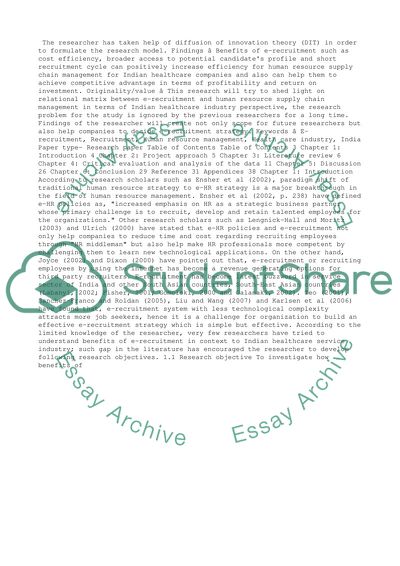Cite this document
(“Benefits of E-Recruitment on Human Resource Supply Chain Management Dissertation”, n.d.)
Retrieved from https://studentshare.org/business/1404255-benefits-of-e-recruitment-on-human-resource-supply
Retrieved from https://studentshare.org/business/1404255-benefits-of-e-recruitment-on-human-resource-supply
(Benefits of E-Recruitment on Human Resource Supply Chain Management Dissertation)
https://studentshare.org/business/1404255-benefits-of-e-recruitment-on-human-resource-supply.
https://studentshare.org/business/1404255-benefits-of-e-recruitment-on-human-resource-supply.
“Benefits of E-Recruitment on Human Resource Supply Chain Management Dissertation”, n.d. https://studentshare.org/business/1404255-benefits-of-e-recruitment-on-human-resource-supply.


